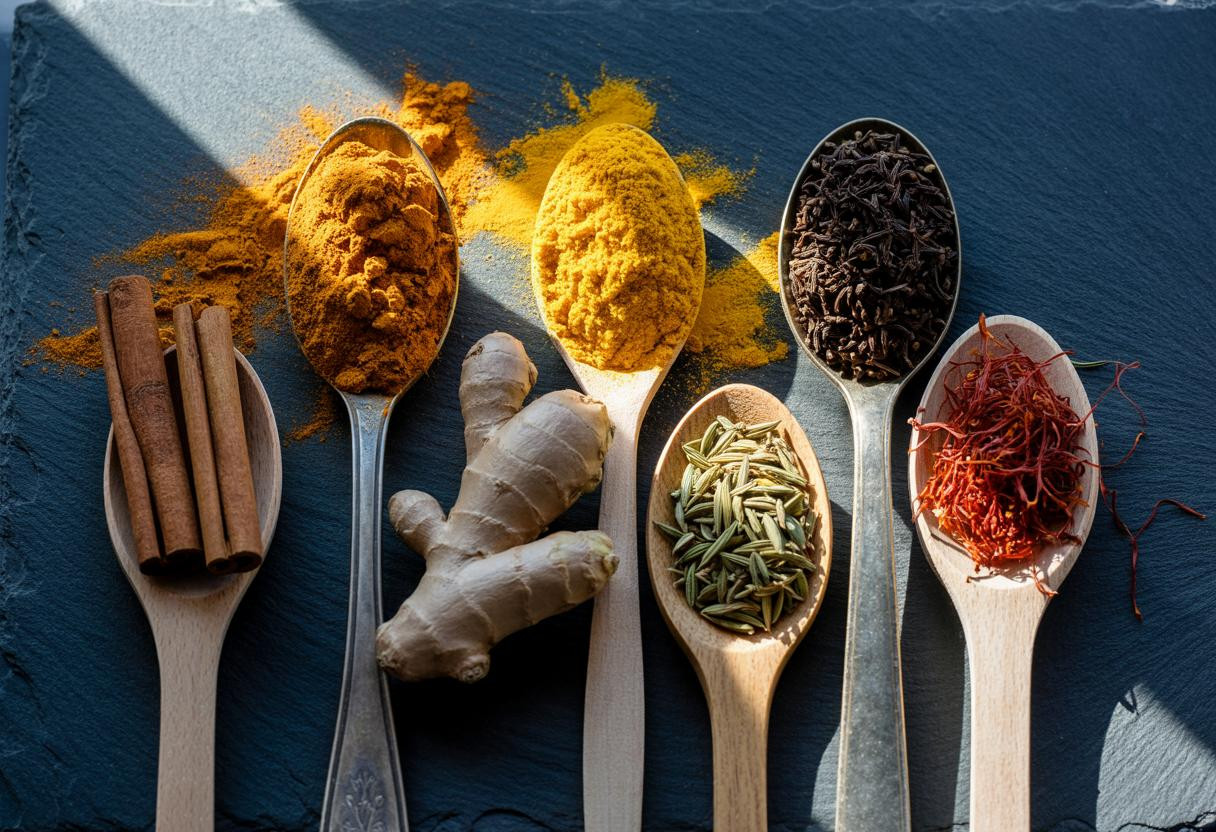These five powerful spices sitting in your kitchen cabinet could be the game-changers your blood sugar levels have been waiting for. While millions reach for expensive medications and complicated diets, cutting-edge research reveals that common spices like cinnamon, ginger, and black cumin can reduce fasting glucose by up to 27 mg/dL – results that rival some prescription treatments. The science behind these natural remedies is finally catching up to what traditional medicine has known for centuries.
The surprising science behind nature’s glucose guardians
Recent breakthrough studies involving over 3,000 participants have revolutionized our understanding of how everyday spices interact with our metabolic system. Black cumin emerged as the clear winner, demonstrating the most dramatic fasting glucose reductions of 17-27 mg/dL in clinical trials.
What makes these findings particularly compelling is the precision of the mechanisms involved. Cinnamon’s cinnamaldehyde compound literally hijacks your cellular glucose transporters, forcing them to work more efficiently. Meanwhile, ginger’s gingerols activate the same metabolic pathways that expensive diabetes medications target.
The 2024 meta-analysis that shocked the medical community showed consistent results across diverse populations, with ginger and black cumin also lowering HbA1c by 0.56% – a reduction that translates to meaningful long-term health improvements.
How each spice rewrites your metabolic programming
Black cumin: The glucose reduction champion
This unassuming seed contains thymoquinone, which essentially reprograms your pancreatic beta cells to produce insulin more effectively. Studies show 2-3 grams daily for 12-24 weeks can slash fasting glucose levels more dramatically than any other spice tested.
Cinnamon: Your insulin sensitivity enhancer
Beyond its delicious flavor, cinnamon blocks PTP1B, an enzyme that normally degrades insulin signaling. Think of it as removing the brakes from your body’s glucose control system. Just 3,000 mg daily can reduce fasting insulin by 0.76 UI/µL.
Ginger: The postprandial spike stopper
Ginger’s secret weapon lies in its ability to slow gastric emptying while boosting GLP-1 production. This means your blood sugar rises more gradually after meals, preventing those dangerous glucose roller coasters. For those dealing with digestive issues alongside blood sugar concerns, four plants that relieve digestion, bloating and gas in less than 30 minutes provides complementary strategies.
The counterintuitive dosing strategy that maximizes results
Here’s what most people get wrong: more isn’t always better, but consistency is everything. The most effective participants in these studies didn’t mega-dose sporadically – they maintained steady, moderate intake over months.
Turmeric presents a fascinating case study in bioavailability. Without black pepper’s piperine, 95% of turmeric’s curcumin passes through your system unused. This explains why some people see dramatic results while others notice nothing.
Saffron, while expensive, requires only 1,000 mg daily to influence serotonin pathways that control hypothalamic glucose regulation. It’s worth noting that cancer patients using 1 gram of ginger daily beat chemotherapy nausea by 40%, demonstrating ginger’s broader therapeutic potential beyond glucose control.
Your strategic implementation roadmap
Morning activation protocol
Start with 1 teaspoon of cinnamon in your morning coffee or oatmeal. This primes your glucose transporters for the day ahead and provides sustained benefits for 8-12 hours.
Meal timing optimization
Take ginger 30 minutes before your largest meal of the day. Fresh ginger tea or 1,000 mg in capsule form maximizes its gastric emptying effects. However, be mindful of foods that could counteract these benefits – this fruit spikes blood sugar faster than a glazed donut, highlighting the importance of comprehensive dietary awareness.
Evening stabilization routine
Black cumin oil (1 teaspoon) taken with dinner provides overnight glucose stability. Its thymoquinone content works while you sleep to enhance morning insulin sensitivity.
Why timing and combinations multiply effectiveness
The research reveals something remarkable: these spices don’t just work individually – they create synergistic effects when properly combined. Participants who used turmeric with black pepper saw 40% better absorption rates compared to turmeric alone.
For optimal metabolic support, consider incorporating these 3 fermented foods reduce liver inflammation by 40% and heal your gut alongside your spice regimen, as gut health directly impacts glucose metabolism.
The most successful participants maintained their spice protocols for at least 12 weeks, with peak benefits appearing around week 8-10. This isn’t a quick fix – it’s a sustainable strategy that works by gradually reprogramming your cellular response to glucose.
